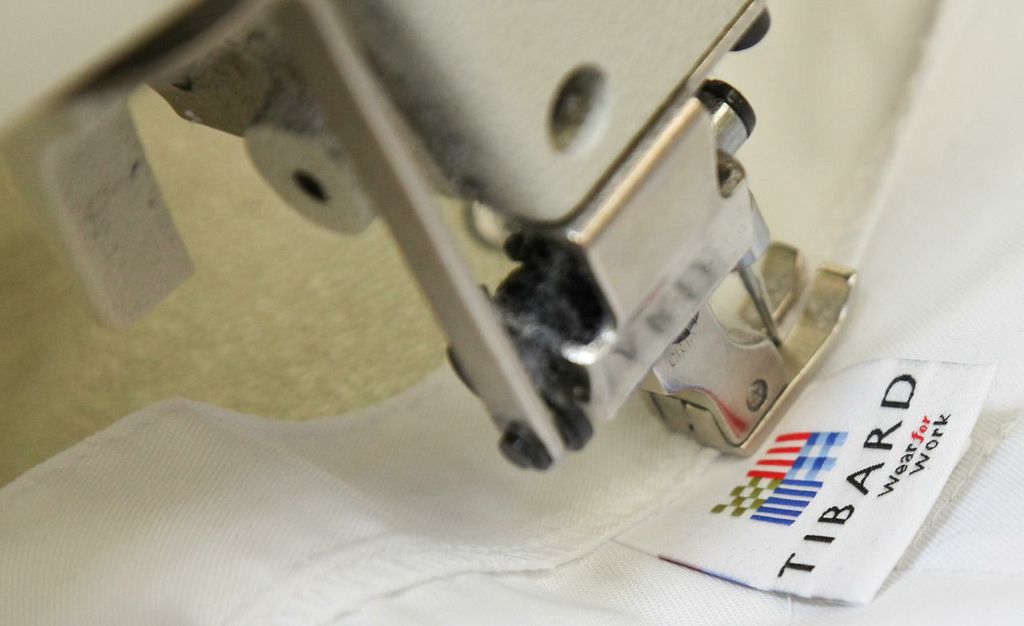
Tibard have been manufacturing some of the best chef jackets available since our founding in 1979. We have learnt quite a lot in that time so we thought we would share this short blog which details exactly how we approach the task.
Hello and welcome to the very first blog of the “how we” series. We are going to be using the blog to provide detailed and in depth knowledge that builds and capitalises on our vast experience as international workwear supplies and manufacturers. This very first blog is part of a 3 part series on how Tibard do what we are most well-known for; designing and manufacturing chef jackets. Over the coming months we will be regularly writing blogs that are all part of our “how we” feature which will hopefully give you all a better look and understanding into exactly what we do here at Tibard.
Introduction
The important thing to understand about designing chef jackets is that it is not always possible or even  necessary to fully re-invent the wheel each time that we want to launch a new design. After all, the look and feel of chef whites is something that has very strong roots that stretch back hundreds of years and it is not possible or right to erase that many years of history. Instead, when we design our modern chef whites we must think about drawing inspiration from the stereotypical idea or a chef jacket and then think about how we can make it better.
necessary to fully re-invent the wheel each time that we want to launch a new design. After all, the look and feel of chef whites is something that has very strong roots that stretch back hundreds of years and it is not possible or right to erase that many years of history. Instead, when we design our modern chef whites we must think about drawing inspiration from the stereotypical idea or a chef jacket and then think about how we can make it better.
Ultimately, we want to achieve perfection with our designs and ranges; the perfect mix of price, form, function and quality. However, we generally see that these 4 elements are conflicting in nature; there are certain trade-offs that must be made in order to create the best jacket of a particular type. This is why Tibard have such a large range of chef jackets, we aim to manufacture a product that is suitable for everyone in the industry because we know that the quality of even our cheapest chef jacket is far superior to that of competing products. So bearing in mind these 4 core elements of the perfect chef jacket, we will take you through the decisions we have to make when we want to design and manufacture a new product.
Price
There are many different elements that impact the on the price of a finished chef jacket, first of all there is the time it takes to make, the human man hours of cutting, sewing, stitching and finishing a jacket can only ever be reduced to a certain point without sacrificing quality. Another element that impacts on price is the quality of the material that is used to produce the finished garment, this includes the weight and mix of fibres which are general polyester and cotton for chef jackets. The final main material cost that adds to the price are the buttons and other finishing’s, these are the most labour intensive part of our jackets and the buttons themselves carry a significant cost.
So how did we design our cheapest chef jacket, the Traditional Jacket, when all of these factors are taken into account? When we first developed our take on the traditional jacket we knew what we wanted to achieve, to make the lowest priced and best value chef jacket on the market, to do this we found the right mix of materials and ensured that the minimum amount was wasted in cutting. We also optimised the designed to make it very easy and quick to stitch into shape while at the same time reducing the number of aesthetic finishes that some of our more expensive jackets may have. After this process, what we were left with is an excellent product that does exactly what it needs to; provides chefs with a jacket that fulfils a very basic need in a no thrills yet cost effective way.
Next week we will look at both the form and function of our chef jackets and how these elements affect the way we approach design.